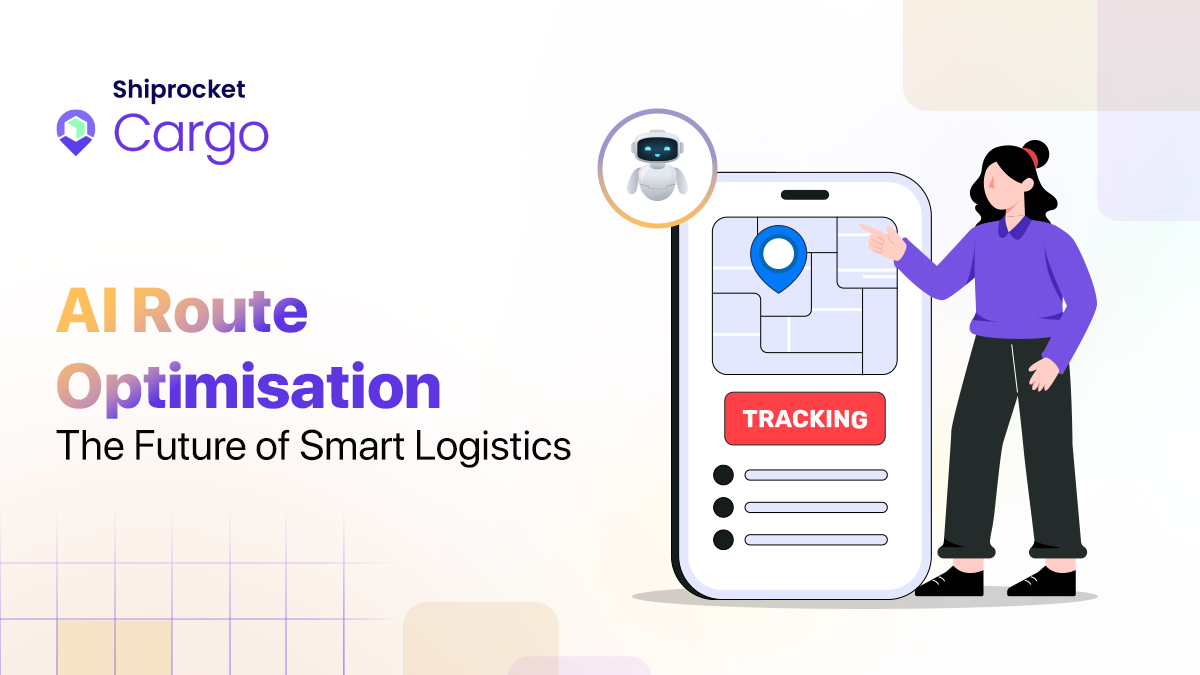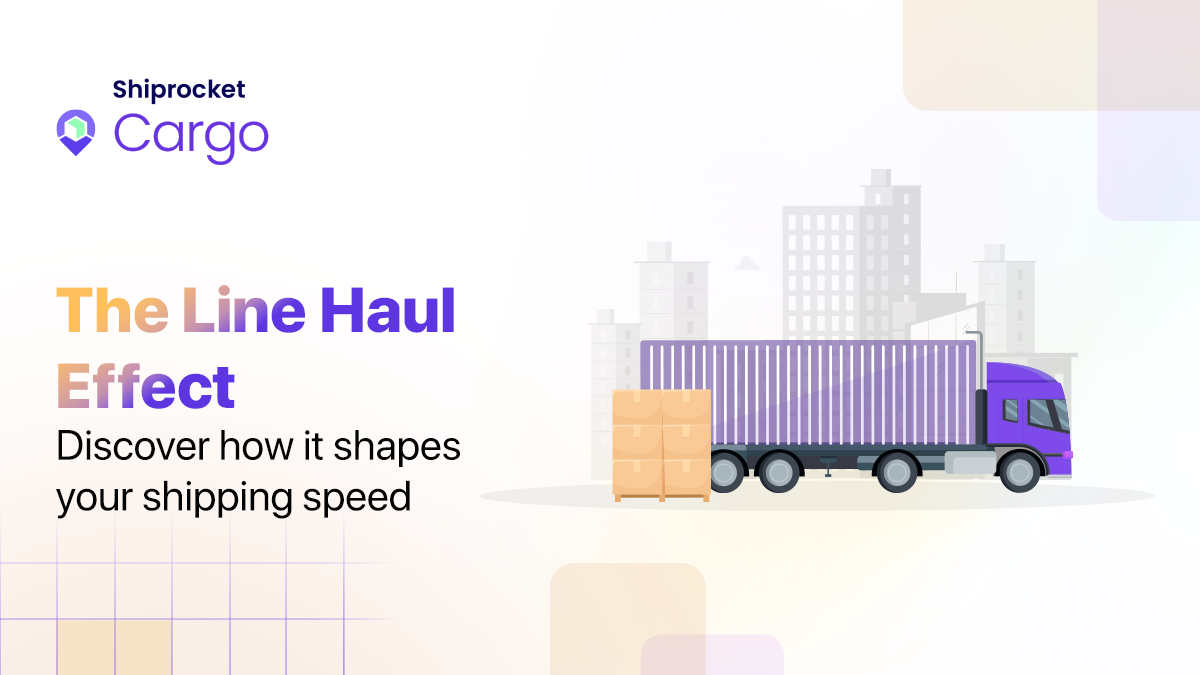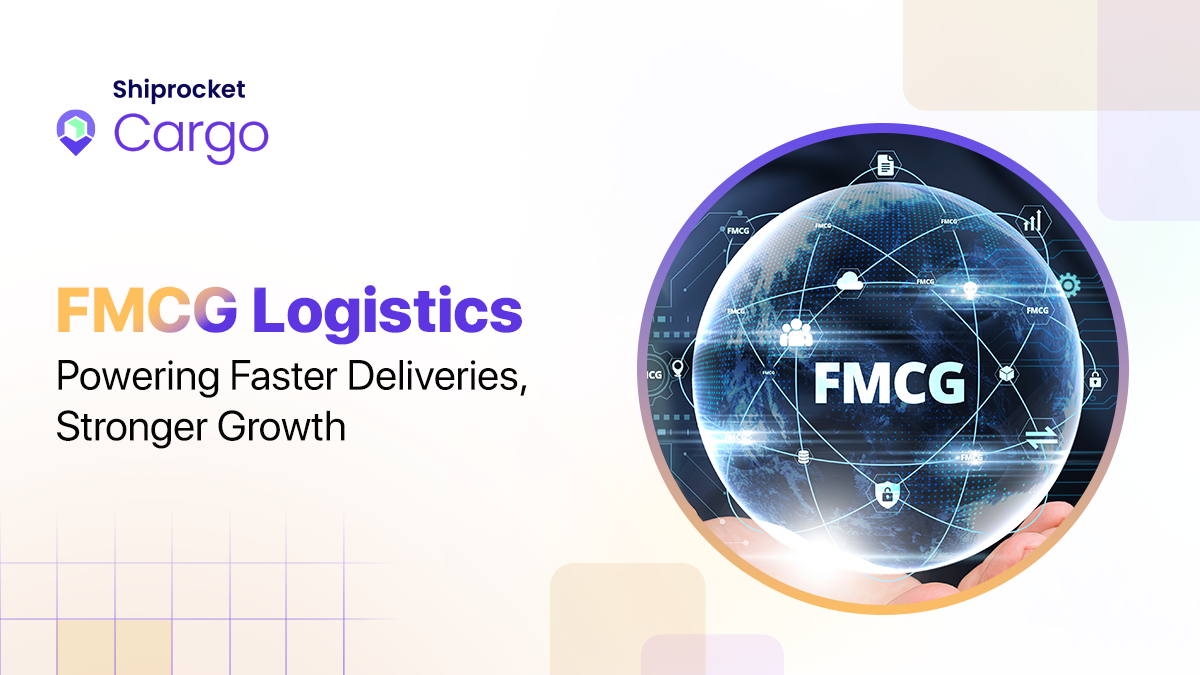What Is a Transportation Management System (TMS) and Why Does It Matter for Modern Logistics?
- What is a TMS and How It Works in Supply Chains
- What Are the Core Functions of a Transportation Management System?
- What are the Key Benefits of Using a TMS System?
- What Types of Businesses Use a Transportation Management System?
- What are the Latest Trends Shaping TMS Systems Today?
- How to Choose the Right TMS System?
- How is Shiprocket Cargo Leveraging TMS Principles to Simplify Shipping for Businesses?
- Conclusion
Shipping your products may seem simple, but for growing businesses, it often isn’t. Managing multiple carriers, rising freight costs, missed delivery windows, and delayed shipments can eat into your profits and customer trust. This is where a Transportation Management System (TMS) can make a real difference.
It is a digital software essential for businesses to streamline their logistics operations. It helps businesses automate shipping planning, carrier selection, route optimisation, and real-time tracking.
For sellers, this means saving time, cutting costs, avoiding errors, and improving customer satisfaction, which are all crucial for scaling your business beyond your city.
LLC Buddy says, more than 50% of TMS users see a positive ROI within 18 months, showing its real value for businesses.
In this blog, we’ll cover how a TMS works, its benefits, and why it’s crucial for modern sellers looking to grow nationally or internationally.
What is a TMS and How It Works in Supply Chains
A Transportation Management System (TMS) is a digital tool that helps businesses plan, manage, and optimise the movement of goods. It gives you real-time visibility into shipments, helping ensure deliveries are on time, cost-effective, and compliant with regulations.
With a TMS, you can manage everything from choosing carriers and comparing freight rates to tracking shipments, planning routes, and analysing performance; all from one platform. It also connects with other systems like ERP and warehouse management software to make operations smoother.
Here’s how it works:
- It helps you create efficient transportation plans based on analysing delivery requirements, available carriers, routes, and costs.
- It helps automate bookings, shipments, and all necessary documentation.
- It helps monitor shipment tracking and respond quickly to delays or disruptions.
- It lets you optimise processes according to performance trends, cost-saving opportunities, and suggested route or carrier adjustments.
- Automated audits and accurate reporting help in better decision-making.
A TMS makes it easier for small and growing businesses to manage both local and international shipments efficiently, save time, and reduce errors.
What Are the Core Functions of a Transportation Management System?
The core functions of the transportation management system include:
- Route Optimisation: Plans the most efficient routes to save fuel and reduce delivery time.
- Carrier Selection: It enables businesses to select carriers by comparing cost, speed, and reliability.
- Freight Audit and Payment: Automated auditing verifies invoices against contracts, preventing businesses from overpaying.
- Shipment Tracking and Visibility: Provides visibility to real-time shipment tracking, aligning everyone at every step during transit.
- Reporting and Analytics: Offers key insights like shipping performance, costs, and KPIs that support better decision-making.
What are the Key Benefits of Using a TMS System?
The benefits of the TMS system transform how companies manage supply chains. Some of the key benefits include:
- Cost-Efficiency: A TMS helps you compare carrier rates, consolidate shipments, and optimise routes, helping you cut down unnecessary transportation costs while maintaining delivery timelines.
- Real-time Tracking: Real-time tracking allows companies to monitor shipments at every stage.
- Better Customer Experience: Faster deliveries, reliable ETAs, and fewer errors help businesses improve customer satisfaction and brand reputation.
- Data-driven Decision-Making: With detailed analytics and performance reports, it helps businesses to make data-driven decisions.
- Enhanced Efficiency: It helps you automate manual processes such as order scheduling, documentation, and invoicing, reducing the risk of human error.
- Scalability: As the business grows, using TMS easily adapts to handle more shipments, complex routes, and additional partners, helping you scale faster.
What Types of Businesses Use a Transportation Management System?
A TMS is useful for any business that ships products regularly. Key users include:
- eCommerce Sellers: Manage high shipping volumes and track orders in real time.
- Manufacturers: Ensure on-time deliveries to distributors or retailers and streamline supply chains.
- Retailers and Wholesalers: Coordinate multiple suppliers, warehouses, and delivery routes efficiently.
- Third-Party Logistics (3PL) Providers: Optimise routes, consolidate shipments, and serve diverse clients.
- Exporters and Importers: Handle international freight, customs paperwork, and carrier selection while staying compliant.
- Businesses with Regional or National Distribution: Coordinate shipments across multiple locations and large-scale operations.
In short, any business that ships frequently can save time, reduce costs, and improve customer satisfaction with a TMS.
What are the Latest Trends Shaping TMS Systems Today?
As technology advances, Transportation Management Systems (TMS) are evolving to make shipping smarter, faster, and more efficient. Key trends shaping modern TMS include:
- AI and Machine Learning
AI and ML in TMS provide predictive analysis, help businesses forecast demand, optimise delivery routes, and reduce costs.
- Cloud-Based TMS Solutions
To boost scalability, faster updates, and lower IT costs, companies are shifting from on-premise software to cloud platforms.
- Integration with IoT Devices
The use of IoT sensors has enabled real-time shipment tracking, offering complete visibility into goods in transit.
- Sustainability
Companies are using TMS to plan eco-friendly routes and reduce carbon emissions.
- Enhanced Data Security
Modern TMS systems are incorporating advanced encryption and compliance measures for enhanced data security.
How to Choose the Right TMS System?
Choosing a TMS means picking a solution that fits your business needs, integrates with your systems, and scales as you grow.
Here is how you can choose the right TMS for your business:
- Understand Your Business Needs: Identify the specific logistics challenges you want the TMS to solve.
- Evaluate Scalability: Select a TMS that is scalable and can grow with your business.
- Integration Capabilities: Ensure that TMS integrates seamlessly with other existing platforms, like ERP and WMS.
- User-Friendliness: Look for a TMS that offers easy-to-use dashboards and clear workflows.
- Cost vs Value: While price matters, focus on the value a TMS provides.
- Real-time Analytics and Reporting: Choose a TMS that provides actionable insights, tracks KPIs, and supports data-driven decisions.
How is Shiprocket Cargo Leveraging TMS Principles to Simplify Shipping for Businesses?
Tools like Shiprocket Cargo combines modern TMS features with seamless logistics solutions, helping businesses manage shipments efficiently while reducing complexity. For sellers, this means smoother operations, lower costs, and more time to focus on growth.
Here is how it helps businesses make informed decisions:
- AI-Driven Carrier Selection: Automatically picks the most cost-effective and reliable carriers, saving you money and effort.
- Real-Time Shipment Tracking: Monitor every delivery from pickup to drop-off, reducing delays and improving customer trust.
- Bulk Shipping Support: Manage large order volumes easily without extra hassle or errors.
- Automated Billing & Reconciliation: Cuts manual work, avoids mistakes, and saves time for your team.
- Early COD Remittance: Speeds up cash flow, so you can reinvest in inventory or expansion quickly.
Conclusion
A TMS is more than just a tool; it’s a growth enabler. For small and growing businesses, it means fewer shipping errors, faster deliveries, and lower costs, all of which build trust with customers.
Partnering with platforms like Shiprocket Cargo lets you apply TMS principles without added complexity, giving you time, resources, and confidence to expand your business, reach new markets, and scale efficiently.
Start leveraging smart logistics today with Shiprocket Cargo and turn every shipment into a growth opportunity.



